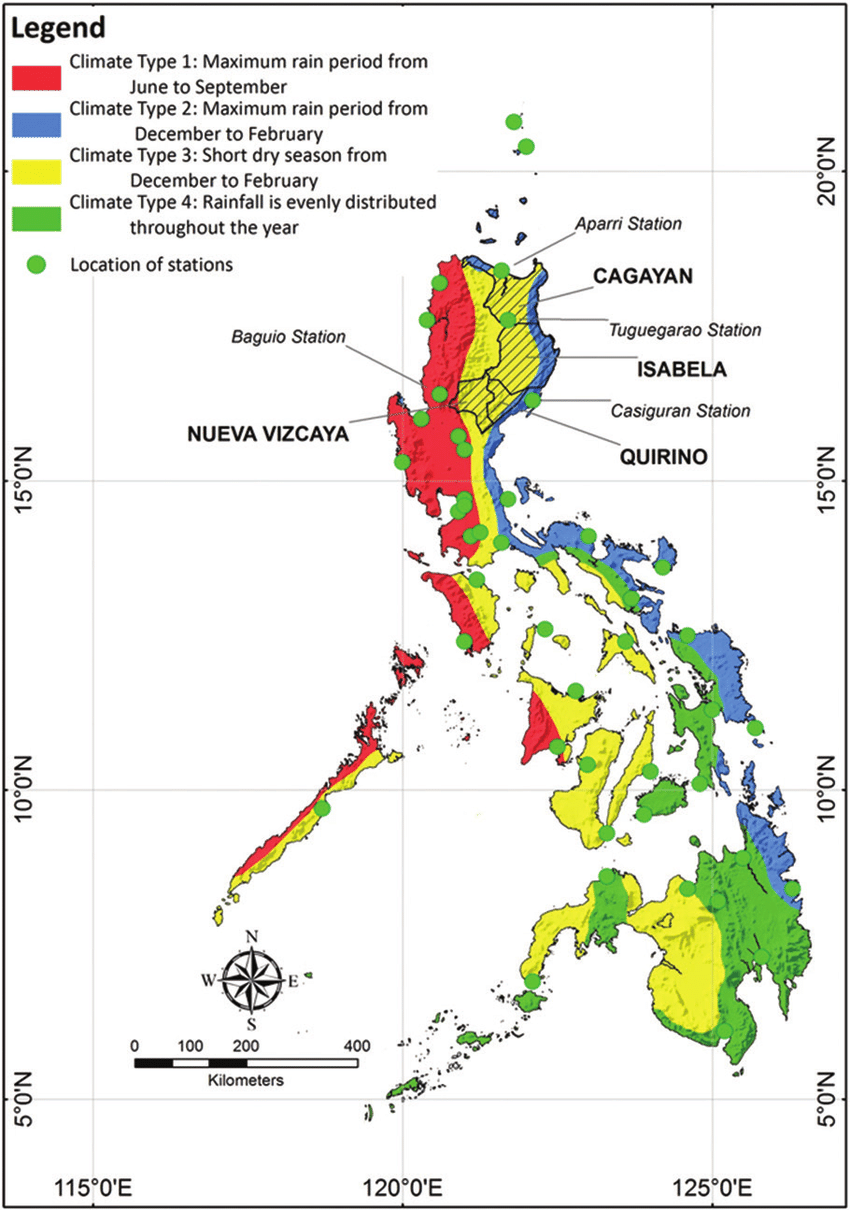The Philippines climate

High temperatures and heavy rainfall are typical of the Philippines’ humid equatorial climate. The average annual rainfall is 2,348 mm, but this varies greatly by location, ranging from 960 mm in southeast Mindanao to over 4,050 mm in central Luzon.
The year-round average temperature in the Philippines is 24°–27°C, with the hottest month being May and the coldest month being January. Humidity levels average around 82%, due to warm trade winds, lush vegetation and abundant rainfall.
The dry season in the Philippines occurs from December to May, followed by a rainy season from June to November. A second rainy season occurs from December to February on the eastern and northern coasts. Recently, the Philippines has seen wetter conditions during the dry season.
The Philippines is one of the world’s most typhoon-prone regions, averaging 19–20 typhoons annually, with 7–9 making landfall. The Philippines’ sea levels are rising faster than the global average, posing a greater risk of storm surges and threatening the permanent submergence of low-lying areas.
Typhoon season in the Philippines is July-October, when 70% of typhoons develop. The Philippine Atmospheric, Geophysical and Astronomical Services Administration (PAGASA) issues typhoon warnings to the general populace.
The five-year running average indicates that more typhoons occur during El Niño events. El Niño events, which occur every 2–7 years on average, cause less rain and typhoon activity. La Niña events, which are less common, result in heavier rainfall and more typhoon activity. The strongest typhoon in history was super typhoon Haiyan, also known as Yolanda in the Philippines, which had winds of up to 195 mph, killed 6,300 people and displaced millions.




